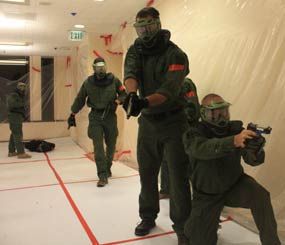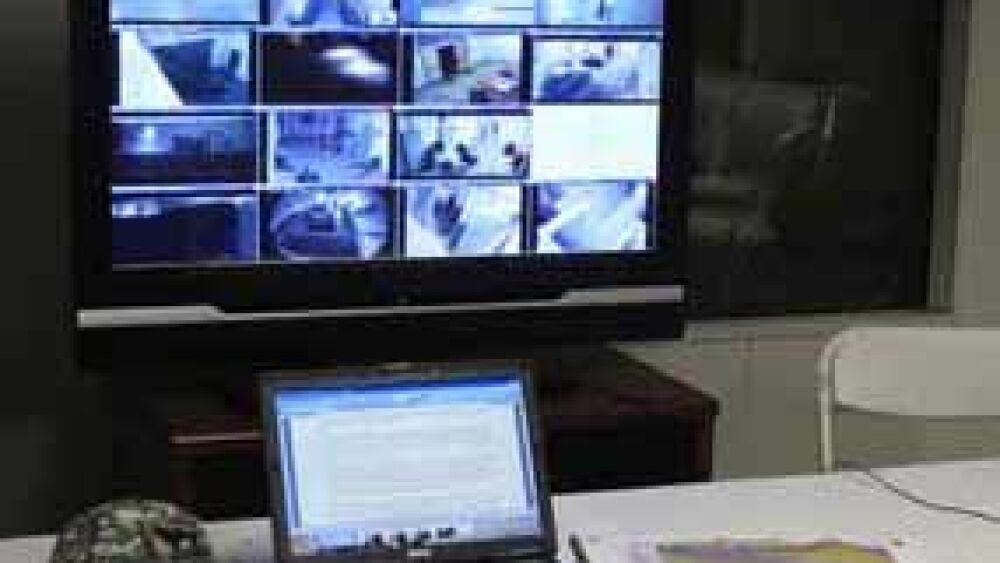By Doug Wyllie
FireRescue1 Staff
SAN FRANCISCO — The San Francisco Bay Area Urban Shield exercise — now in its fourth year — continues to gain national and international recognition as a model for testing and evaluating enhanced regional preparedness across all disciplines of public safety and major disaster response.
This year, 29 teams participated, including three international teams — Israel, Jordan, and Bahrain — in what may one day soon become the model program for measuring the enhanced preparedness capabilities of any region in the United States.
The 2010 exercise, which took place Oct. 15-18, focused on five overarching goals designed to strengthen preparedness in order to respond to — and prevent, to the extent possible — potential terrorist attacks, major disasters, and other emergencies requiring a multi-jurisdictional, multi-discipline response from public safety. The goals for Urban Shield 2010 were to:
• Test communication and management capabilities with a focus on city and county Emergency Operation Centers (EOCs) throughout a five county area
• Integrate critical infrastructure and onsite private security personnel into a collaborative response framework to test public/private sector response plans and unified response
• Evaluate regional fire, search & rescue, and HAZMAT response with a focus on core competencies and integration with SWAT operators
• Evaluate regional EOD teams’ core competencies and response capabilities
• Evaluate regional capabilities to effectively identify, integrate and manage volunteers responding to large scale disasters
Every single participant — from planners to role players to visiting dignitaries and observers to the competing SWAT team members — was able to take a major win away from this year’s exercise in the form of 48 hours of continuous training throughout an incredibly sophisticated series of scenarios.
Practice together, perform together
Every year, the planners of Urban Shield add a new set of wrinkles to the challenges the teams are faced with, and this year there were significant opportunities to practice interdisciplinary coordination between SWAT, EMS, and fire teams.
Every year of Urban Shield has a massive involvement of fire and EMS teams from a support and role-player perspective, but there were numerous scenarios this year that had those disciplines taking part in the tactical exercises.
At a recently-shuttered automobile manufacturing facility — known throughout the Bay Area as the “NUMMI plant — the Fremont, Calif., police and fire departments hosted a massive exercise that tested tactical teams’ ability to do force protection for EMS responders, as well as teams’ ability to triage and extract victims from a hostile environment.
I was positioned at a high-tech Observation Post from which I could watch and listen to each of the scenarios via live streamed video. The setup — provided to Urban Shield by a company called Ojo Technology — could easily be a stand-alone story in its own right.
The video screen gave clear views of the sprawling compound, and the ability to zoom in to incredibly fine details whenever and wherever we wanted to.
It operated much like a TiVo or other DVR, with easy-to-use rewind and playback capability and the video quality was tremendous — not quite the HD we want when we’re watching the NLCS, but a lot better than some IP video solutions we’ve seen.
According to one Fremont PD sgt. we spoke with, all the competing teams will be given a CD-ROM with the footage of their exercises, with full playback, zoom, and the like.
At the NUMMI plant exercises, three competing teams were assigned three separate challenges, each taking place at roughly the same time.
At the completion of those individual scenarios, all three teams were “surprised” with an additional scenario in which the teams had to simultaneously respond with a coordinated breach of three entry points on a single simulated facility. Each team had to do all three challenges, as well as all three specific assignments to the final test.
 Photo Doug Wyllie SWAT respond to a workplace violence / active shooter scenario on the 44th floor of the Pyramid Center in Fremont, Calif. |
One, two, three, GO!
In one of the three combined scenarios, a realistic large-scale hostage rescue operation under the control of a single Unified Command Post, the participating SWAT and fire personnel were evaluated on their ability to conduct covert movement to the objective, and properly performing Tactical Emergency Medical System (TEMS) support.
In another drill not too far away on the facility, a combined fire/EMS and SWAT team was given two assignments including primary search and rescue operations inside a designated warm zone, and exterior distraction for the coordinated hostage rescue operation.
SWAT was specifically evaluated on tactical movement as well as the ability to smoothly transition to a hostage rescue support position. The fire team was evaluated on their ability to work in a tactical environment while properly performing triage operations to wounded victims.
The third individual scenario had the SWAT team evaluated on their ability to support fire’s warm zone search and rescue operations and penetrating security responsibilities on the planned hostage rescue operation.
Tactical Team 3 was also required to provide security for the fire team and clear an area of high concern before a downed officer could be rescued successfully. Meanwhile, the fire team was evaluated on its ability to successfully conduct a rope rescue involving a downed patrol officer in an active shooter environment.
From the vantage point we enjoyed at our high-tech OP in the small hours of Sunday morning, the coordination between SWAT, Fire, and EMS appeared to be near flawless.
The level of communication and coordination between the disciplines was outstanding, and all three of the combined teams quickly and efficiently completed their assignments.
EMS responders were able to get to the objective safely under SWAT protection, and then triage and treat the victims — at least one of whom is an actual limb amputee, providing a heightened level of realism — and fire teams were able to complete their SAR operations in a potentially violent environment.
In speaking with members of those teams during the Monday evening banquet, we heard over and over that the NUMMI plant exercises were not merely challenging from the SWAT perspective, but realistic from the standpoint of working closely with fire and EMS partners in a dynamic environment. The winners of the event were the Israeli team. Oakland Police Department took second place, while San Francisco Police Department tied with FBI for third.












